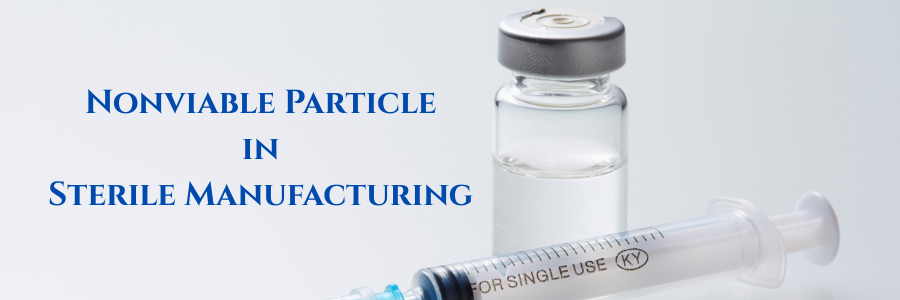In sterile environments, non-viable particles are non-living particulate matter like dust, skin cells, or fibers that can act as a carrier for viable particles and pose a risk to product sterility, necessitating monitoring and control.
- Non-viable particles are inert, non-living particles, including dust, skin flakes, fibers, and other minute detritus.
- They are formed by the disintegration of large-size materials or condensation of small-size particles or droplets, for example: mist, smoke, fume, dust, rust, dirt, pollen, fibers, cloth, and chemical compounds.
- While they don’t reproduce or spread themselves, they can carry viable microorganisms and contaminate sterile products.
Nature of Non-Viable Particles
Non-viable particles include:
- Dust: Small solid particles that can come from various sources, including the environment, equipment, or personnel.
- Fibers: These can originate from clothing, packaging materials, or other surfaces.
- Aerosols: Tiny liquid droplets that can carry contaminants.
Sources of Contamination
Non-viable particles can enter sterile environments through:
- Airflow: Airborne particles can infiltrate cleanrooms or sterile zones, especially if ventilation systems are not properly filtered.
- Personnel: Humans are significant sources of non-viable particles, shedding skin cells, hair, and clothing fibers.
- Equipment and Materials: Tools, containers, and packaging may introduce particles if not properly cleaned or maintained.
Methods of Control
To manage non-viable particles, various strategies are employed:
- Air Filtration: High-efficiency particulate air (HEPA) filters are commonly used to trap airborne particles.
- Cleanroom Protocols: Strict gowning procedures, cleaning schedules, and maintenance practices help minimize particle introduction.
- Environmental Monitoring: Regular sampling and monitoring of particulate levels ensure compliance with cleanliness standards.
Impact on Product Quality
In industries like pharmaceuticals and biotechnology, the presence of non-viable particles can lead to:
- Product Contamination: Particles can contaminate sterile products, leading to compromised efficacy or safety.
- Shelf Life Reduction: Contaminants can alter the chemical properties of products, reducing their shelf life.
- Increased Costs: Contamination events can result in product recalls, increased testing, and potential legal liabilities.
Microbial Risk Reduction
By controlling non-viable particles, the risk of microbial contamination is reduced:
- Biofilm Formation: Non-viable particles can provide a surface for biofilm development, which can harbor viable microorganisms and make them harder to remove.
- Cross-Contamination: Particles can facilitate the transfer of microbes between surfaces and products.
Read also:
- Major Sources of Contamination in the Sterile Area
- Bubble Point Integrity Test in Pharmaceutical Industry
Resource Person: Omar Salah

